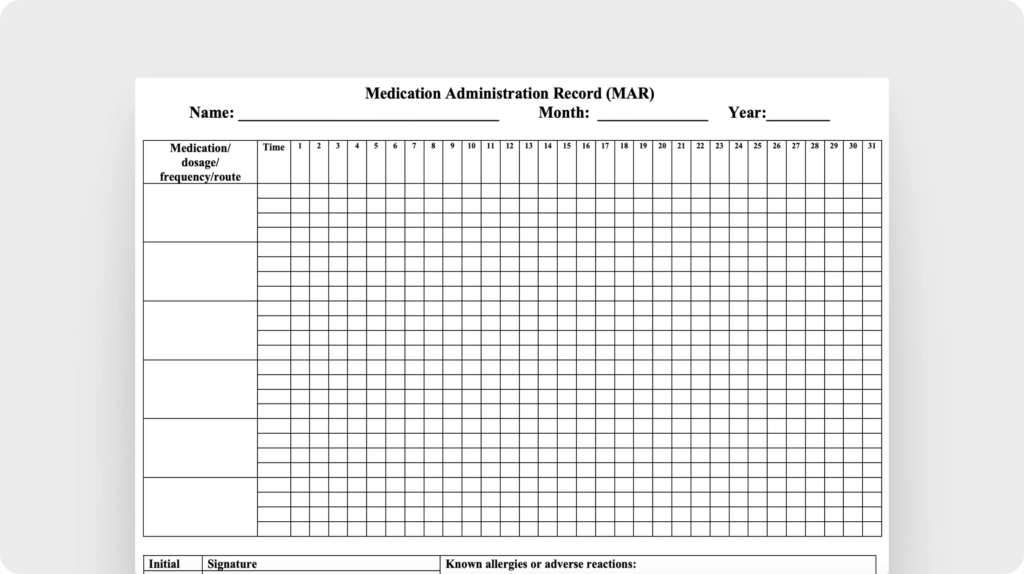Managing medications for several patients all at once can be complex and time-consuming, but it’s essential for ensuring patient safety and effective treatment. An ATI medication template simplifies this process, supporting healthcare professionals in tracking dosages, administration times, and patient reactions. The templates below are versatile, making them suitable for a variety of medications and workflows.
By making these templates part of your routine, you can enhance the efficiency of your medication management practices, reduce the risk of errors, and improve overall patient care. Whether you’re dealing with a single medication or a more complicated regimen, these templates offer a structured and organized approach to medication tracking. Let’s explore how these templates can transform your medication management process and help you deliver the highest standard of care.
Free ATI medication templates
With the medication tracker templates below, you can focus more on your patient and less on the paperwork:
ATI medication template
The ATI medication template makes the process of medication administration and tracking much smoother, leading to accuracy and efficiency. It includes detailed fields for patient and medication information, along with administration instructions and effects observed. You can easily adapt the template to fit specific medications, ensuring it meets your unique needs. This template empowers you in maintaining a high standard of patient care by keeping all critical information organized and accessible.Morphine sulfate medication template
This template is tailored specifically for managing morphine, which is a potent pain reliever that also comes with risks and potential side effects. You’ll record patient details first, followed by essentials about the medication and then monitoring parameters and precautions. Since the form allows photo uploads, you can even take photos of any adverse reactions and attach them to the patient’s record for further analysis. Use this template to make sure morphine sulfate is administered safely and effectively, minimizing risks and enhancing patient outcomes.Medication tracker template
The medication tracker template offers a comprehensive overview of the current medication a patient is taking, including a section for refill information so that it can be reordered in time. You’ll also be prompted to consider patient adherence to the regimen and communicate with the primary care provider in case of changes. This template can be easily adapted for different kinds of medications, and you can even set alerts for refill dates.Medication administration record template (Washington County, Oregon)
This template from the Washington County government website is a streamlined tool for tracking medication administration across an entire month. It gives you plenty of space space to list medication names, dosages, routes, and scheduled times for up to 31 days. This makes it well-suited for both residential care facilities and home healthcare settings. On top of this, it also has sections for PRN (as-needed) medications and vital sign monitoring. You’ll find fields for recording patient-specific data like blood pressure, temperature, pulse, and weight, along with known allergies or adverse reactions.
How to create a medication tracker template in Lumiform
It’s easy to create a medication tracker form in Lumiform. First, use Lumiform’s AI form builder to customize a template based on specific medications and dosages relevant to your practice. Take advantage of logic and action management to guide users through the form based on their inputs. If a patient reports a reaction, the form can automatically prompt for additional details.
Next, leverage different input types such as text, number, signature, and photos to capture comprehensive data. For example, you can take photos of medications or adverse reactions and attach them to the patient’s record.
Finally, use Lumiform’s data analysis and tracking features to monitor medication administration trends and patient reactions over time. This allows you to identify patterns, make informed decisions, and continuously improve patient care.




